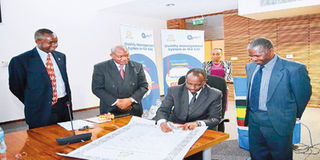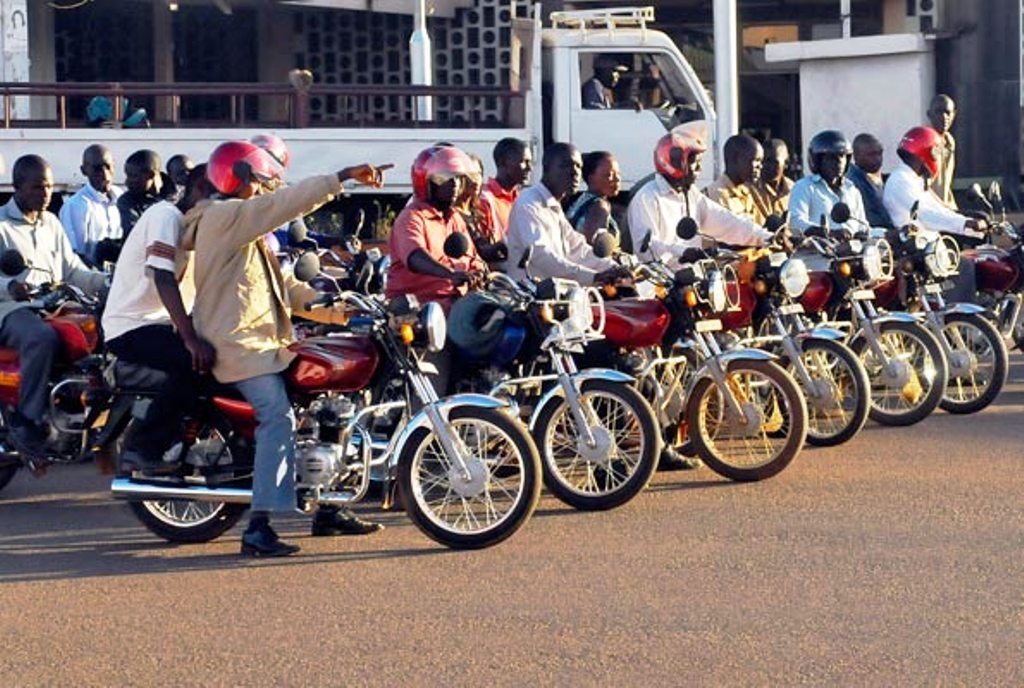EAC gets $2bn from creative industry: SG

EAC secretary-general Richard Sezibera signs a quality management system policy statement for the EAC Secretariat in Arusha in July 2014 to show commitment to improved service delivery. PHOTO | FILE
What you need to know:
“Human activities and innovations are key drivers of wealth creation of households and countries in the 21st century. Our EAC is no different,” said EAC secretary-general (SG) Richard Sezibera during the opening of a one-week regional Arts and Cultural Festival (Jamafest) in Nairobi on Tuesday.
Dar es Salaam. It may be taken for granted, but the East African Community (EAC) bloc earns a whooping $2 billion from its creative industry a year, nearly 20 times the annual budget of the Arusha-based regional organisation. The industry has been described as one of the most rapidly growing sectors not only in income, but also job creation as well as export trade.
“Human activities and innovations are key drivers of wealth creation of households and countries in the 21st century. Our EAC is no different,” said EAC secretary-general (SG) Richard Sezibera during the opening of a one-week regional Arts and Cultural Festival (Jamafest) in Nairobi on Tuesday.
He said culture contributed to EAC economies through investments in identity, innovation and creativity and could help build new development pathways for individuals, communities and countries.
Contigents of cultural workers, artistes from all the five EAC partner states - Tanzania, Uganda, Kenya, Burundi and Rwanda are taking place in the second edition of Jamafest in the Kenyan capital under the theme:’ Unleashing the economic potential of cultural and creative industries.
The carnival was graced by Kenyan principal secretary in the Ministry of Sports, Culture and Arts Patrick Omutia at the Uhuru Park dais and snaked through various main streets before ending at the Kenyatta International Conference Centre (KICC).
The event will showcase the region’s rich cultural heritage and reflect the economic potential of EAC’s cultural and creative industry.
Several live performances, exhibitions and symposia have been lined up. Live performances will include music, dance and movement, poetry, story telling, drama and acrobatics, among other things. Popular traditional games within the region are on the list such as bao-jua, kora and wrestling.
In light of economic empowerment, the festival has designated an area within the area, where local and participating artistes will show case and sell their wares such as jewellery, clothing, curios, paintings,sculptures and handicrafts.
EAC deputy secretary-general (Productive and Social Sectors) Jesca Eriyo said the creative industry ranged from art, film, design, fashion, music, performing arts to software and video games account for three per cent of the combined Gross Domestic Product (GDP) in the region in addition to providing employment to citizens.
She said the EAC secretariat in collaboration with the partner states had concluded the regional mapping of culture and creative industries and a report would shed more light on the sector’s actual potential.
“It is encouraging to know that there is a wide spectrum of stakeholders interested in the development of arts and culture,” she said, stressing the commitment by the five partner states to the advancement of culture and creative economy in the region.
Opening the event, Kenyan Deputy President William Ruto urged the EAC partner states to nurture arts and culture in the region by developing appropriate policies, strategies and programmes “that address the creative industry in a holistic manner and tap into abundant talents in the region.”
He said the EAC member states in line with the Common Market Protocol must develop strategies through which the region could benefit from this lucrative trade opportunity to realise development gains, while fostering, protecting and promoting the creative economy in the region.
He further urged the Council of Ministers to be passionate about Sports and Cultural sectors by allocating enough resources for championing activities that brought about the East African common citizens together. “These activities, which are really close to the hearts of our common citizens, include festivals of this nature as well as sports and games competitions in all major disciplines.”
Kenya’s cabinet secretary for EAC Affairs, Commerce and Tourism Zhyllis Kandie disclosed that to strengthen the capacity of cultural actors, the EAC would be focusing on facilitating and supporting the harmonisation of cultural policies and laws within the region to create a conducive policy environment for transfer of knowledge, exchange of expertise and best practices among cultural actors in both the private and public sectors.
The first edition of Jamafest held in Kigali, Rwanda in February 2013, attracted more than 17,500 people, the majority of them being local people and 500 artistes from the five partner states, according to officials of the EAC secretariat in Arusha.




